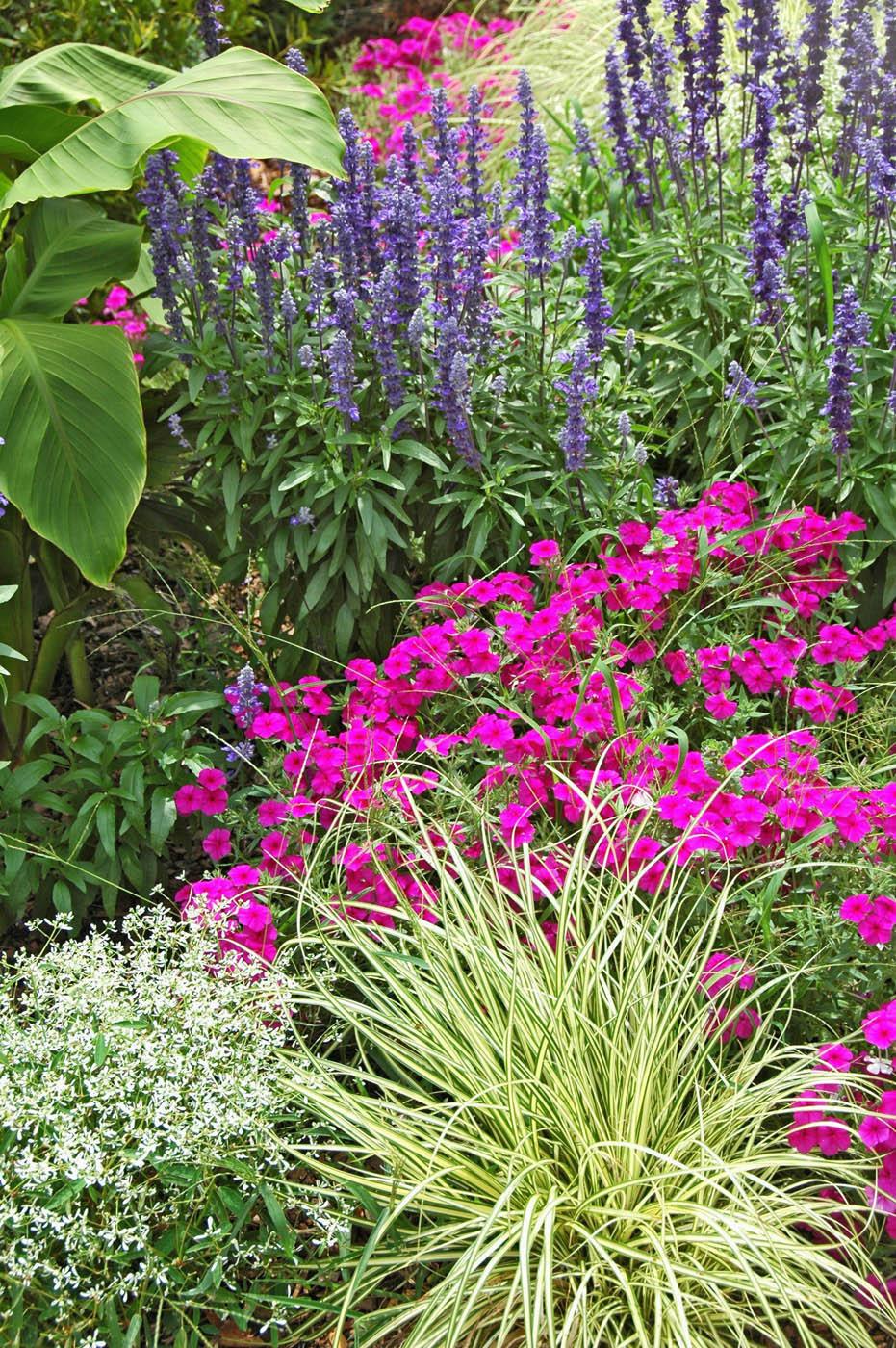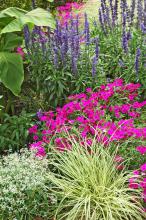Information Possibly Outdated
The information presented on this page was originally released on January 3, 2008. It may not be outdated, but please search our site for more current information. If you plan to quote or reference this information in a publication, please check with the Extension specialist or author before proceeding.
Reflect first, then plan for 2008 landscapes
By Norman Winter
MSU Horticulturist
Central Mississippi Research & Extension Center
As we enter the New Year, most of us have planted everything we are going to plant until spring, making this a time for reflecting on how things went the past growing season and to plan for next year's flower border.
Last summer, we were filming our Southern Gardening TV news segment at a site with beautiful bedding plants. If I made a poster of the photo I took and put a title on the picture, it would be something like “Adjectives and Accolades.”
Before I go further, let me simply list the plants in the garden. They were: Red Abyssinian banana (Ensete ventricosum Maurelii), Victoria Blue salvia (Salvia farinacea), Intensia Neon Pink phlox (Phlox hybrida), Evergold sedge (Carex hachijoensis), and Diamond Frost euphorbia (Euphorbia hypericifolia).
The words I would use for the garden are tough, persevering and marvelous. All these adjectives describe this planting with its array of interesting color and texture. The Red Abyssinian banana with its course texture suggested this garden could be in a tropical location, although it wasn't.
Victoria Blue salvia, perennial in zones 7-10, provided a cottage-look and a complementary partner for the Evergold carex or sedge with a grassy fine textured element. Evergold is perennial in zones 5-11. We can all learn to simply tuck in a small grass for huge contrast in leaf structure.
The blue salvia also had a strong attraction to the neon pink flowers of the Intensia phlox. Pinks and blues go together just like boys and girls. The Intensia phlox series has proven to be an anomaly in the world of phloxes, blooming from planting in the spring until frost. It is perennial in zones 9-11 and an award-winning annual in colder regions.
The contrasting but glistening white flowers came from one of the hottest plants in the country, the Diamond Frost euphorbia. Diamond Frost is mounding, reaching 10 to 14 inches tall, and is practically indestructible in the summer landscape. Of course the white flowers partner with any color. It is perennial in zones 9-11 and has won accolades as an annual all across the country, and was named Plant of the Year in the United Kingdom.
This garden looked great from late spring until the first frost in the fall. It held your interest with coarse foliage, fine foliage, round flowers, spiky flowers and airy baby's breath-like flowers.
We can do much the same in 2008, even if we choose a totally different palette of plants.
Prepare the soil first, layer the beds from back to front, and have some bold or coarse texture as well as fine foliage. Vary the shapes of the flowers, making sure they attract attention either in contrast or harmony with the other colors.
The weather has turned cold, so now is the time to sit by the fire and make a plan. Happy New Year!








